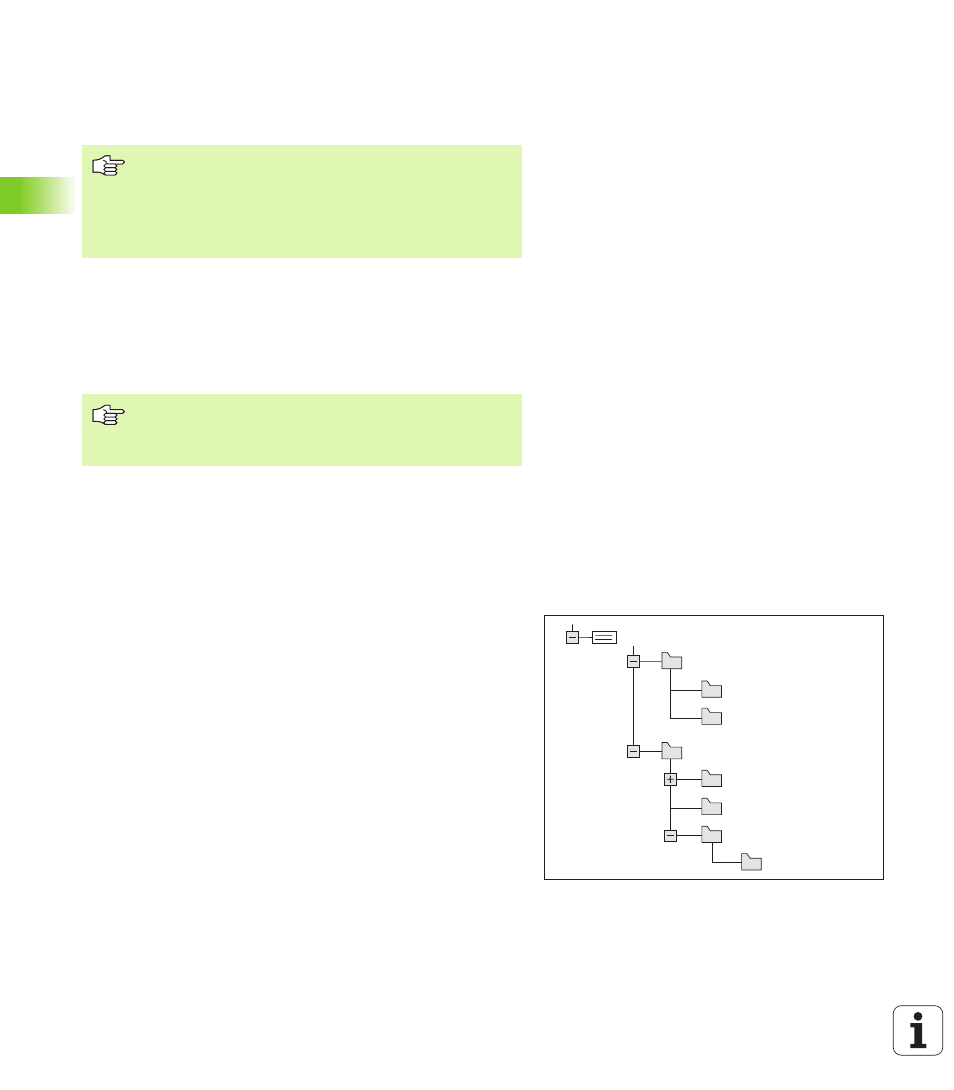4 advanced file management, Note, Directories – HEIDENHAIN iTNC 530 (340 422) ISO programming User Manual
Page 84: Paths

84
4 Programming: Fundamentals of NC, File Management, Programming Aids, Pallet Management
4.4 A
d
v
a
nced Fi
le Manag
e
ment
4.4 Advanced File Management
Note
Directories
To ensure that you can easily find your files, we recommend that you
organize your hard disk into directories. You can divide a directory into
further directories, which are called subdirectories. With the –/+ key or
ENT you can show or hide the subdirectories.
Directory names
The name of a directory can contain up to 16 characters and does not
have an extension. If you enter more than 16 characters for the
directory name, the TNC will display an error message.
Paths
A path indicates the drive and all directories and subdirectories under
which a file is saved. The individual names are separated by a
backslash “\”.
Example
On drive TNC:\ the subdirectory AUFTR1 was created. Then, in the
directory AUFTR1 the directory NCPROG was created and the part
program PROG1.H was copied into it. The part program now has the
following path:
TNC:\AUFTR1\NCPROG\PROG1.H
The chart at right illustrates an example of a directory display with
different paths.
Use the advanced file manager if you wish to keep your
files in individual directories.
To use it, set the MOD function PGM MGT (see
“Configuring PGM MGT” on page 489).
See also “File Management: Fundamentals” on page 75.
The TNC can manage up to 6 directory levels!
If you save more than 512 files in one directory, the TNC
no longer sorts them alphabetically!
TNC:\
AUFTR1
NCPROG
WZTAB
A35K941
ZYLM
TESTPROG
HUBER
KAR25T